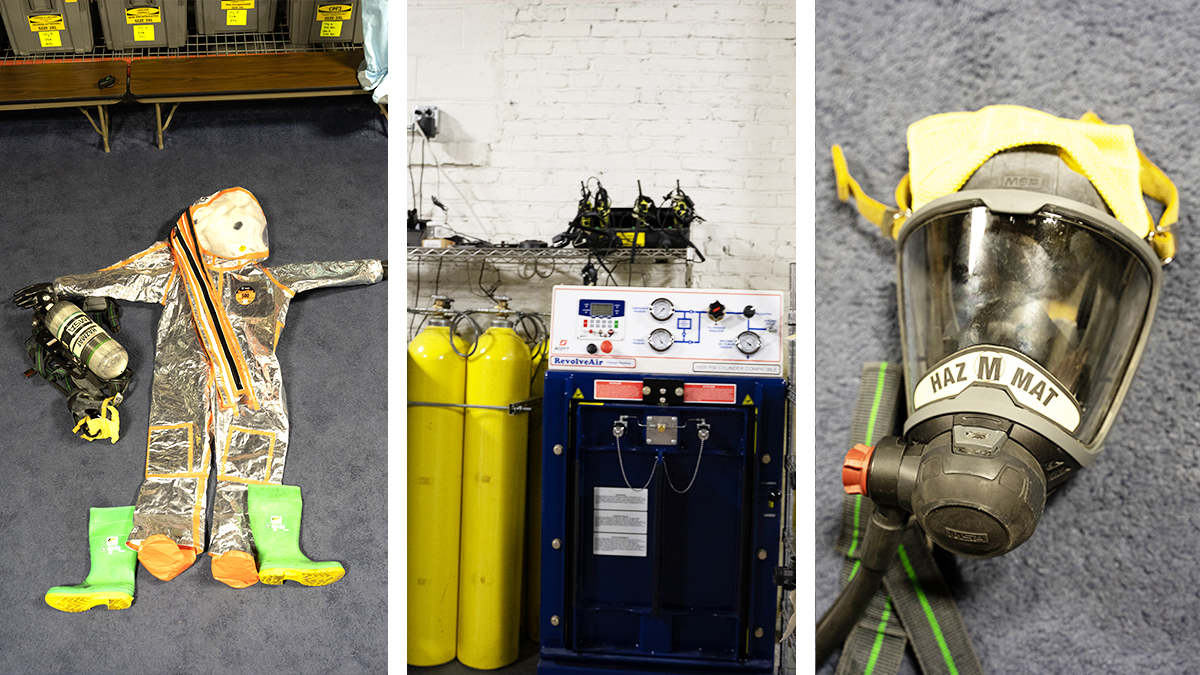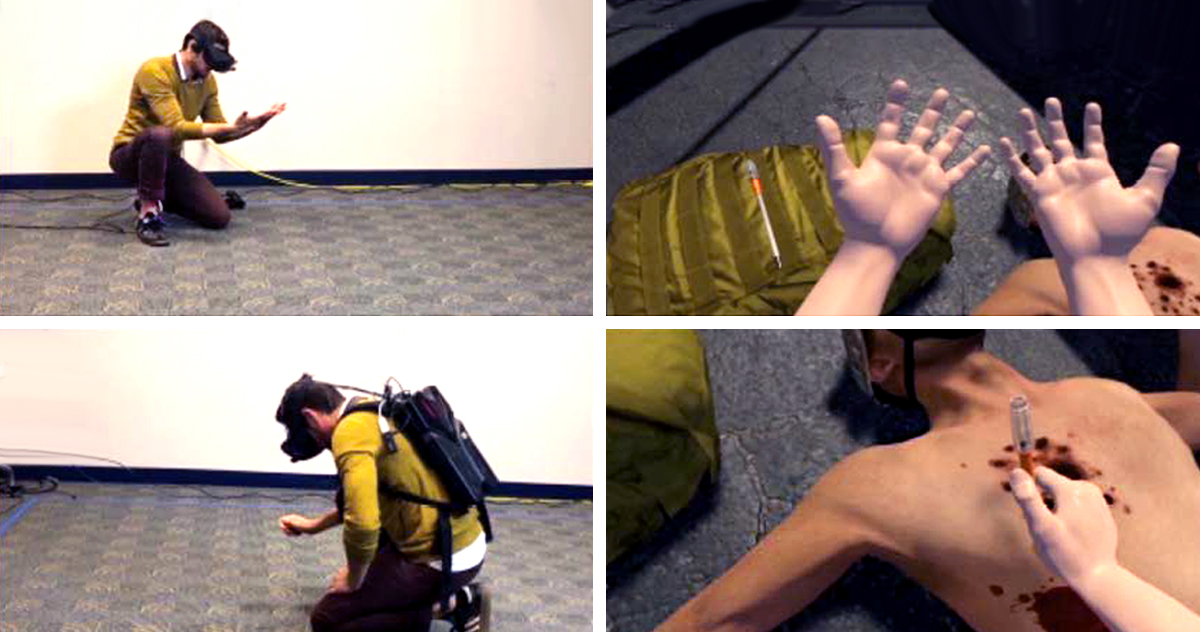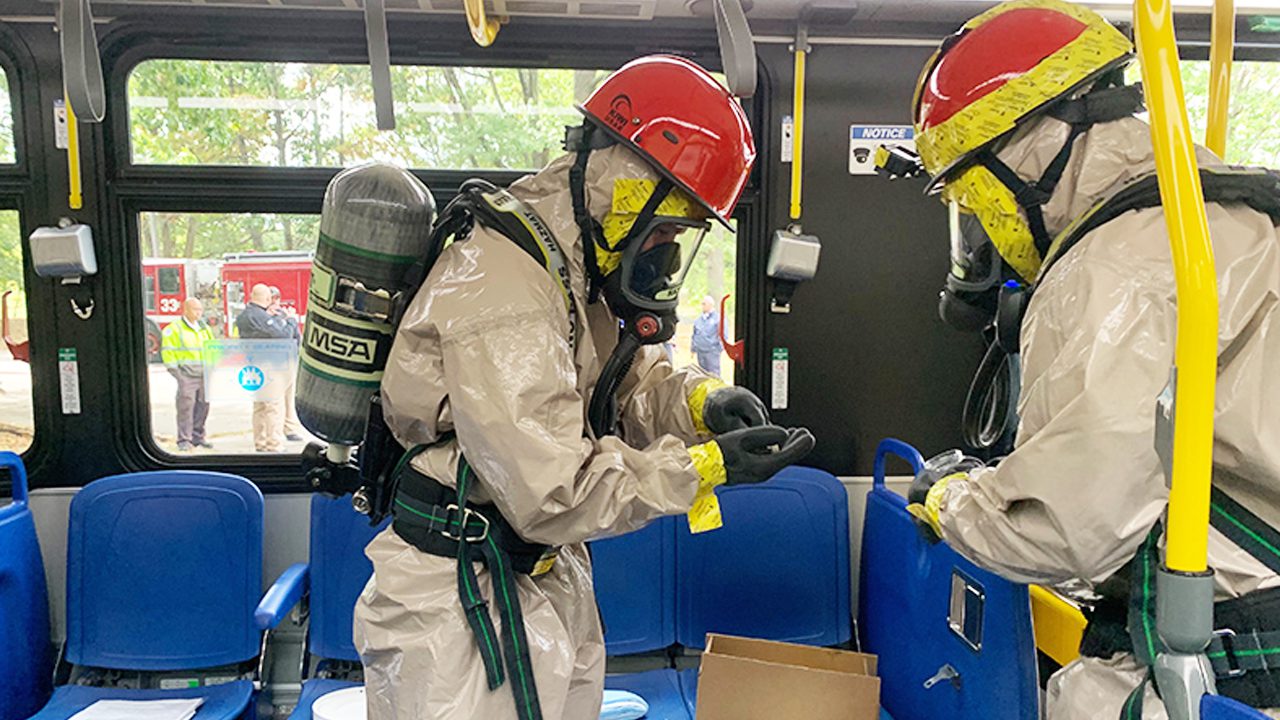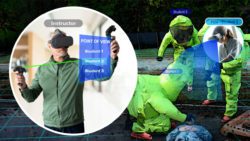There’s a fire and a chemical spill—fire trucks arrive with their lights flashing, and firefighters in their heavy-duty hazardous materials (HAZMAT) suits run toward the flames. What happens next for these first responders—and how quickly and safely they stop the fire—depends on how well their training prepared them. It’s known as hazardous waste operations and emergency response (HAZWOPER) training.
Funded by the Worker Training Program (WTP) of the National Institute of Environmental Health Sciences (NIEHS), researchers at Charles River were just beginning to create a virtual reality (VR) system to support HAZWOPER training when the COVID-19 pandemic hit. The US government passed a bill for $8.3 billion dollars of supplemental coronavirus funding; Charles River won a supplemental grant to extend their project called IMPRINT to deal with the complications of COVID-19.
“There’s all these different requirements that you have to consider with COVID. COVID makes for a more complex disaster, and complex disasters are terrible,” said Charles River scientist Austin Crumpton, co-principal investigator for the effort, along with scientist Jessica Voge. He continued, “Imagine you have any complex disaster … you have a chemical fire, like a lab fire—ok, that’s bad. Then [imagine you have] a lab fire and a hurricane—yikes. Now it’s like you can have a lab fire, and a hurricane, and COVID. Now you have to deal with … an infectious disease that’s going around [on top of everything else].”
To deal with the coronavirus, first responders are adopting more safety practices into their standard operating procedures, including social distancing and working in “pods” or smaller, self-contained groups. Before, responders could help each other on difficult tasks like removing bulky HAZMAT boots; now they must disinfect and decontaminate as a first step.
Amongst emergency responders, firefighters are one of the biggest user groups that receive HAZWOPER training; Occupational Safety and Health Administration (OSHA) regulations require that they receive this training before they can respond to HAZMAT events. To figure out how to best train firefighters with VR tools, Charles River is teaming with Fire Lieutenant Michael Kates of the Boston Fire Department (BFD) Hazmat Response, Special Operations Command. Kates is the designated training instructor/coordinator for all of the BFD Hazmat Response Team, as well as technical and gross decontamination units.

On a tour of a Boston Fire Department training facility with Fire Lieutenant Michael Kates, Charles River staff captured images of gear, which they will use to create realistic VR assets. From left to right: HAZMAT suit, air compressor for filling self-contained breathing apparatus, and HAZMAT facepiece
HAZWOPER training and recertification typically consists of classroom lectures guided by videos and presentations, culminating in a final test and a tabletop exercise, where students sit around a table and roleplay or talk through how they would respond to an incident. Current HAZWOPER training practices face a well-known deficiency—a lack of engagement compared to the dramatic, real-world events.
Building on extensive VR experience at Charles River, Voge and Crumpton plan to create VR training modules so trainees can rehearse procedures in real-time in a virtual environment. This kind of training can build muscle memory and habituate them to their duties. VR also offers the ability to replicate hazardous situations that would otherwise be difficult, expensive, or impossible to experience, such as a case where a car has flipped over in the middle of a road and the responder must work in oncoming traffic.

An overturned truck. Image credit: Michael Kates
“The ultimate goal is that we’ll have a VR tabletop exercise that is complementary to somebody’s [a training organization’s] training curriculum,” said Voge. “But also, to go with that big [tabletop] exercise at the end, we want to have these smaller VR modules that we insert throughout the training to give people hands-on experience with different smaller [sub-]components [of the exercise].”
One module that the researchers plan to create will train responders how to use a gas sensor. In typical procedures, responders using a sensor take 30-second air readings at ceiling height, chest height, and at the floor.
The team plans to create a VR-based intelligent tutoring system for this procedure. One idea they’ve discussed is for the system to display a glowing orb at the different heights that a firefighter must take measurements. In their envisioned system, the orbs gradually fade as the firefighter practices and they remember on their own where to take measurements.
 The Virtuoso toolkit developed at Charles River supports a variety of VR experiences, like a medical training scenario (pictured)
The Virtuoso toolkit developed at Charles River supports a variety of VR experiences, like a medical training scenario (pictured)
Although VR software is becoming increasingly widespread for training, there are few existing solutions for emergency responder training and none that are widely recognized or distributed, according to Voge. Most existing solutions attempt to replace existing training; instead, Voge and Crumpton want their system to complement existing training.
They plan to use the Oculus Quest as their VR platform, a portable, head-mounted display that lets multiple users participate in the same training exercise and use realistic walking and grasping behaviors during scenarios.
An important HAZWOPER training organization, The New England Consortium, also funded by the NIEHS WTP, has expressed interest in the Charles River effort and plans to follow updates on the project. If Charles River receives Small Business Innovation Research (SBIR) Phase II funding, Voge and Crumpton plan to explore commercializing their work into a for-sale training app.
Such an app would provide a high-tech training tool that is firmly juxtaposed against old-fashioned training props such as mannequins, which Voge noticed on a recent tour at a BFD training facility. They reminded her of the mannequins found at Charles River, which are used for simulating various medical scenarios.
“We have two medical mannequins in the office, which always freaked me out,” Voge said. “You’ll walk by the offices and they’re pitch dark… but you’ll see, out of the corner of your eye, what looks like a person sitting in a chair, staring at you. And it turns out that it’s one of the mannequins.”
Mannequins, take note. Your days of spooking humans in darkened corridors may finally be numbered—the virtual reality tools are coming—at least, for training firefighters.
Related Articles
Charles River Analytics Develops an Extended Reality Toolkit for Care Under Fire Training
Charles River Analytics Launches an Open-Source SDK that Solves Key XR Challenges
Research reported in this publication was supported by the National Institute Of Environmental Health Sciences of the National Institutes of Health under Award Number R43ES031818. The content is solely the responsibility of the authors and does not necessarily represent the official views of the National Institutes of Health.



